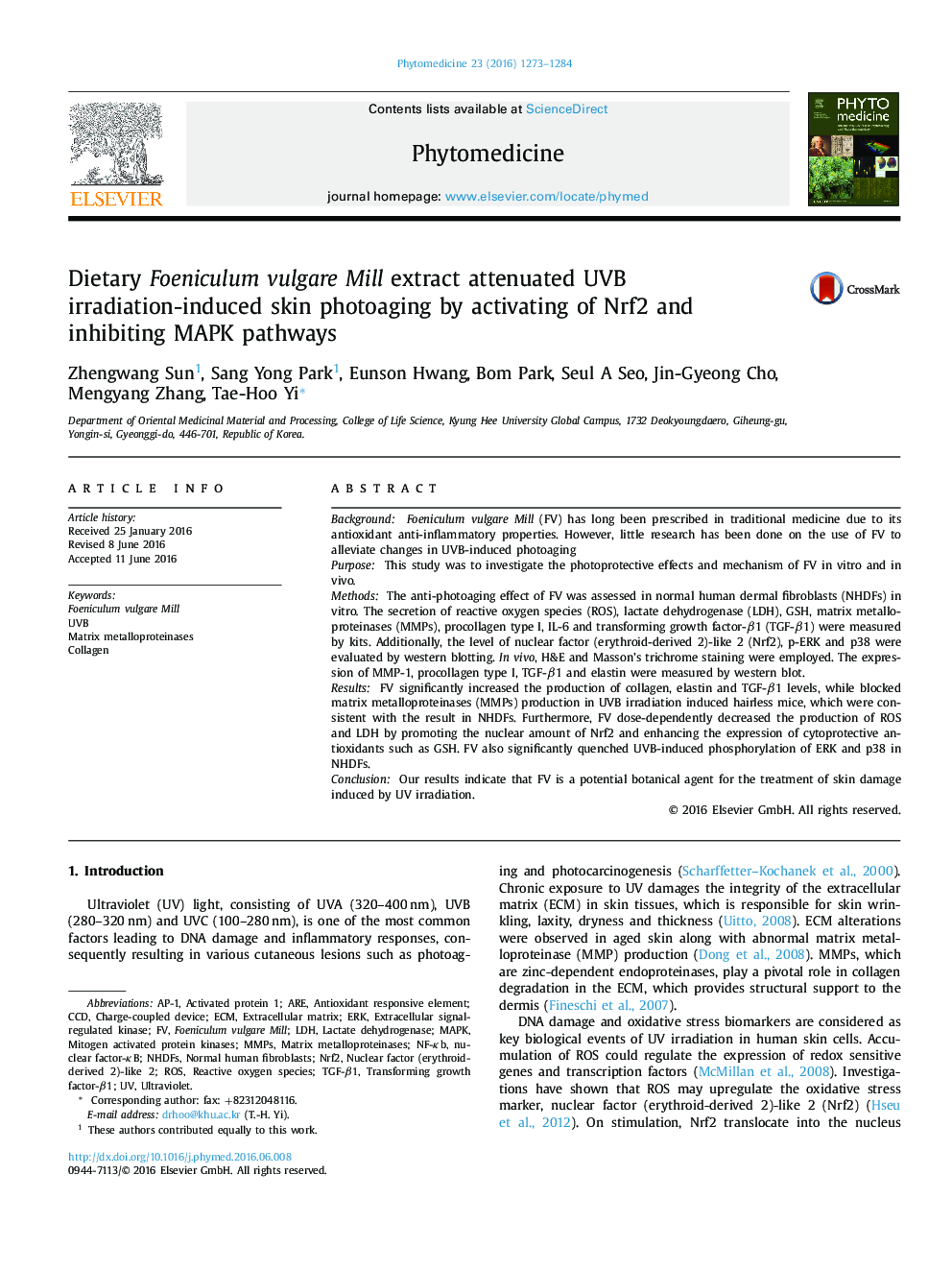| Article ID | Journal | Published Year | Pages | File Type |
|---|---|---|---|---|
| 5549392 | Phytomedicine | 2016 | 12 Pages |
BackgroundFoeniculum vulgare Mill (FV) has long been prescribed in traditional medicine due to its antioxidant anti-inflammatory properties. However, little research has been done on the use of FV to alleviate changes in UVB-induced photoagingPurposeThis study was to investigate the photoprotective effects and mechanism of FV in vitro and in vivo.MethodsThe anti-photoaging effect of FV was assessed in normal human dermal fibroblasts (NHDFs) in vitro. The secretion of reactive oxygen species (ROS), lactate dehydrogenase (LDH), GSH, matrix metalloproteinases (MMPs), procollagen type I, IL-6 and transforming growth factor-β1 (TGF-β1) were measured by kits. Additionally, the level of nuclear factor (erythroid-derived 2)-like 2 (Nrf2), p-ERK and p38 were evaluated by western blotting. In vivo, H&E and Masson's trichrome staining were employed. The expression of MMP-1, procollagen type I, TGF-β1 and elastin were measured by western blot.ResultsFV significantly increased the production of collagen, elastin and TGF-β1 levels, while blocked matrix metalloproteinases (MMPs) production in UVB irradiation induced hairless mice, which were consistent with the result in NHDFs. Furthermore, FV dose-dependently decreased the production of ROS and LDH by promoting the nuclear amount of Nrf2 and enhancing the expression of cytoprotective antioxidants such as GSH. FV also significantly quenched UVB-induced phosphorylation of ERK and p38 in NHDFs.ConclusionOur results indicate that FV is a potential botanical agent for the treatment of skin damage induced by UV irradiation.
Graphical abstractDownload high-res image (129KB)Download full-size image Solar ultraviolet radiation is mainly responsible for photoaging. UV induced radical oxygen species (ROS) increases matrix metalloproteinases (MMPs) expression, which degrades collagen in the extracellular matrix (ECM). Foeniculum vulgare (FV) inhibited UVB induced MMPs expression by inhibiting mitogen-activated protein kinase (MAPK) signaling pathways and enhancing Nrf2 pathway. Our results suggest that FV is a promising botanical agent for use against skin photoaging.
